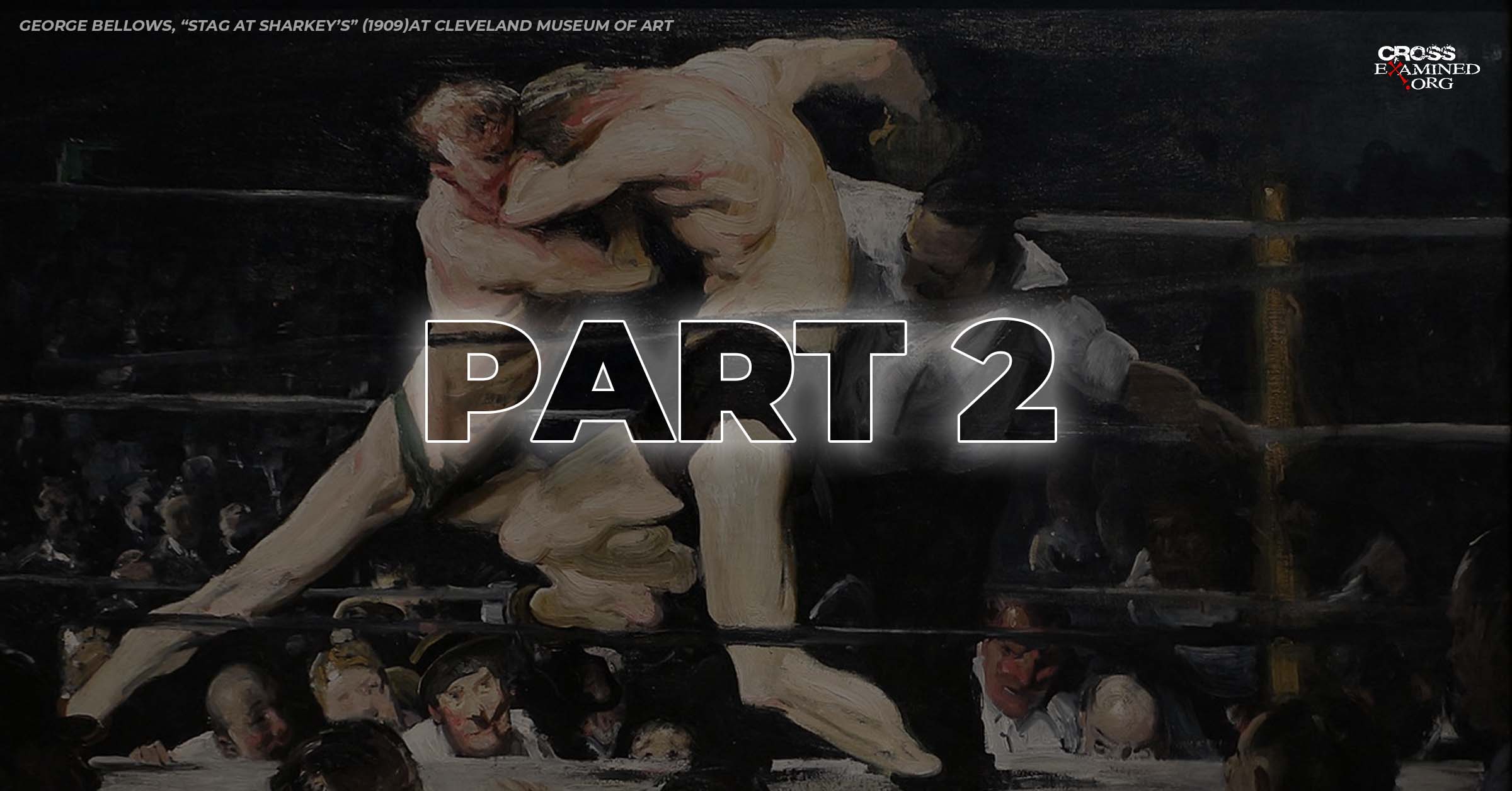How We Got Our Bible: Manuscript Tradition
This article is part 6 in a nine-part series on how we got our Bible. Part 1 dealt with inspiration and inerrancy. Part 2 looked at Old Testament development. Part 3 investigate the Old Testament canon and the Apocrypha. Part 4 considered attributes of the New Testament Canon. And Part 5 inquired into the early church’s reception of the New Testament Canon. This post will consider the manuscript tradition and preservation of the New Testament text.
No Original Autographs
Sadly, none of the original autographs remain. Most likely, they wore out after constant usage and copying. Now, all that we possess are copies of copies of copies—a lot of them actually. Yet these copies differ in lots of different places. But do these differences render our Bible unreliable? Bart Ehrman thinks so. He asks:
How does it help us to say that the Bible is the inerrant Word of God if in fact we do not have the words that God inerrantly inspired, but only the words copied by scribes—sometimes correctly but sometimes(many times!) incorrectly?[1]
In response to Ehrman’s objection, I’d like to quote the Chicago Statement on Biblical Inerrancy. Article X reads:
We affirm that inspiration, strictly speaking, applies only to the autographic text of Scripture, which in the providence of God can be ascertained from available manuscripts with great accuracy. We affirm that copies and translations of Scripture are the Word of God to the extent that they faithfully represent the original.
In other words, through the manuscript tradition, we can recreate the original texts with a high degree of accuracy. The reason for this accuracy is that we have 5,000+ extant Greek NT manuscripts (and thousands more in other languages).
Important Early Manuscripts
While listing all the manuscripts would be an impossible task, allow me to highlight some of the more prominent ones:
P52
P stands for “papyri” taken from a reed-like plant in the marshes of Egypt. All the oldest NT manuscripts are on papyri. P52 is probably the oldest surviving manuscript and most likely dates to the second century. The manuscript is extremely small (about the size of a credit card), and contains portions of John 18:31-33, 37-38 on a two-sided fragment. It was discovered in 1934 and is currently housed in the John Rylands Library in Manchester, England.
P66
This manuscript contains almost a complete copy of John’s Gospel. The manuscript contains 104 in tact leaves and fragments from forty other leaves. This manuscript dates to somewhere between the late second and early third centuries. It is currently housed in the Bodmer Library in Cologny, just outside Geneva, Switzerland.
P75
This manuscript contains most of Luke and John’s Gospels and dates somewhere between the late second and early third centuries. Discovered in the 1950s, this manuscript made a significant splash in the text criticism world as it closely resembles the fourth century Codex Vaticanus, demonstrating that the copying of early scribes wasn’t as uncontrolled and inaccurate as many previously thought. This manuscript is housed in the Vatican Library.
P45
This manuscript is a highly fragmented portion of a four-Gospel and Acts codex (book with pages) and dates to somewhere between the late second and early third centuries. It was originally 220 pages, but only thirty survive. This codex, along with others like P46 demonstrate that the early church started collecting their canonical texts into single book forms. No early codex, for example, contains the canonical Gospels and the Gospel of Peter or Thomas. This manuscript was discovered in the 1930s and is housed in the Chester Beatty Museum in Dublin, Ireland.
P46
This manuscript contains eight of Paul’s letters and Hebrews. Many in the early church thought Hebrews was Pauline, so it was often lumped in with his other letters. This manuscript is very early and probably dates to the second century, though third century is a possibility. It was discovered in the 1920s in the ruins of an old monastery in Egypt. Fifty-six leaves are housed in the Chester Beatty Museum in Dublin, Ireland, and thirty are at the University of Michigan.
Codex Sinaiticus
Unlike the previous manuscripts, this one is on parchment (stretched and dried animal skins) and is extremely elegant. It dates to the fourth century. The manuscript includes about half of the OT, Apocryphal texts, the entire NT, the Shepherd of Hermes, and the Epistle of Barnabas. It contains over four hundred leaves of parchment measuring 13 x 14 inches in size. In 1844, Constantine Tischendorf supposedly discovered it in a waste basket that was set to be burned in a fire to keep the monks warm. Along with Vaticanus, this manuscript is the best one in our possession. It is currently housed in the British Library in London.
Codex Vaticanus
Similar to Sinaiticus, Vaticanus dates to around the middle of the fourth century. It contains almost the entire OT, Apocryphal texts, and almost the entire NT (parts of Hebrews and Revelation are missing). Most text scholars regard Vaticanus as the most trustworthy manuscript of the NT. As mentioned previously, it relates closely to P75. This manuscript has been housed in the Vatican Library since the 15th century.
Texual Variants
With thousands of manuscripts comes thousands of textual variants (about 500,000 in total). A variant is simply a different reading in the text. And as Bart Ehrman likes to point out, “There are more variations among our manuscripts than there are words in the New Testament.”[2] While there are only about 138,000 words in the New Testament, Ehrman’s quote is misleading. First off, we wouldn’t have any variants if we only had one manuscript. With 5,000+, we’re bound to have thousands upon thousands of variants. And second, Ehrman wrongly compares the total number of variants in ALL the manuscripts to the total number of words in only ONE complete manuscript.
Peter Gurry has calculated that when you add up all the words in the 5,000+ manuscripts, and divide it by the total number of variants, you come out to “just one distinct variant per 434 words copied.”[3] That’s a far cry from having far more variants than words in the NT.
Types of Variants[4]
With all the variants in the manuscript tradition, how do scholars determine which readings represent the original text? To help you make sense of this process, I think it will be helpful to place the types of variants into four different categories:
1. Neither Meaningful nor Viable
This category represent variants that don’t change the meaning of the text and obviously don’t reflect the original reading. For example spelling errors are easy to detect and aren’t original to the text. Or, occasionally a scribe got careless and repeated a word like the scribe who copied Galatians 1:11: “For I would have you know, brethren, that the gospel the gospel that was preached by me is not man’s gospel.” These types of variants make up about 75% of all variants (roughly 400,000 variants).
Even Ehrman admits, “To be sure, of all the hundreds of thousands of textual changes found among our manuscripts, most of them are completely insignificant, immaterial, of no real importance for anything other than showing that scribes could not spell or keep focused any better than the rest of us.”[5]
2. Viable but not Meaningful
These variants could reflect the original, but they don’t affect the meaning of the text. Variants of this sort include synonyms, different spellings, changes in word order, and the like. Allow me to offer you a few examples:
- John 1:6 either reads, “There came a man sent from God.” Or it reads, “There came a man sent from the Lord.” Either could reflect the original, but meaning remains the same.
- The movable nu is either present or absent in several instances. This variant is equivalent to the English use of the article “a” or “an.” No translation is affected.
- Sometimes John has two n’s and sometimes it has one n. It can be spelled either way. This could be equivalent to spelling it “color” or “colour.” Technically, both are acceptable. But again, the spelling of Ἰωάννηςdoesn’t affect translation.
- One popular group of synonyms are words translated as “and” (καὶ, δέ, τέ). The variants could reflect the original, but the translation and meaning are not affected.
- Word order changes don’t affect meaning either because Greek is an inflected language. Meaning, the form of the word determines its place in the sentence. For example, I can write “God loves you” twelve different ways in Greek (θεός ἀγαπᾷ σε / θεός σε ἀγαπᾷ / σε ἀγαπᾷ θεός / σε θεός ἀγαπᾷ / ἀγαπᾷ θεός σε / ἀγαπᾷ σε θεός / ὁ θεός ἀγαπᾷ σε / ὁ θεός σε ἀγαπᾷ / σε ἀγαπᾷ ὁ θεός / σε ὁ θεός ἀγαπᾷ / ἀγαπᾷ ὁ θεός σε / ἀγαπᾷ σε ὁ θεός). That is to say, changes of word order don’t affect translation.
3. Meaningful but not Viable
These variants would change the meaning of the text, but they obviously don’t reflect the original. For example, most John 1:30 manuscripts reads, “after me comes a man.” One manuscript, however, reads, “after me comes air.” And I don’t think John the Baptist was talking about some bad locusts he ate. This variant would change the meaning, but it obviously does not reflect the original. The copyists simply left out a letter (ἀήρ vs. ἀνήρ).
Again, Erhman remarks, “Most of the changes found in our early Christian manuscripts have nothing to do with theology or ideology. Far and away the most changes are the results of mistakes, pure and simple — slips of the pen, accidental omissions, inadvertent additions, misspelled words, blunders of one sort or another.”[6]
Of all textual variants, 99% of them fall into these first three categories. The remaining 1% fall into the final category.
4. Meaningful and Viable
These variants would change the meaning of the text and they very possibly could reflect the original. Furthermore, most Bibles include these variants in their footnotes. Let me give you a few examples of what these variants look like and the process that textual scholars go through in making their decisions:
Mark 1:2
Either it reads: (A) “as it is written in Isaiah the prophet” or, (B) “as it is written in the prophets.”
Most of the early manuscripts (Sinaiticus, Vaticanus, Bezae) support reading A. Later Byzantine texts support B. This one seems pretty straight forward to me. A is the more difficult reading because the following quotation comes from both Isaiah and Micah. Therefore, it’s easy to see how a later scribe would try to smooth this out by changing “Isaiah” to “the prophets” because of a perceived mistake in the manuscript he was copying. Since it’s the more difficult reading, and since it is well represented among the earliest manuscripts, reading A is to be preferred.
Luke 22:43-44
Either: (A) it includes Jesus agonizing and sweating drops of blood in the garden, or (B) it omits it.
The manuscript evidence is somewhat divided on this issue. Good manuscripts support both A and B, although church father quotations support A. Moreover, its difficult to understand why a scribe would insert this scene if it wasn’t original to the text. On the flip side, it’s easier to make sense of why a scribe would omit the scene because it makes Jesus look weak compared to other Christian martyrs who boldly went to their deaths. Option A seems like the better reading in my opinion.
Romans 5:1
Either it reads: (A) “Therefore, since we have been justified by faith, we have peace with God through our Lord Jesus Christ” or, (B) “let us have peace with God through our Lord Jesus Christ.”
Most of the early and better manuscripts favor reading B. That said, the context of Romans 5 suggests that A would be a better reading. In other words, Paul doesn’t seem to be exhorting the believers to pursue peace with God, but declaring that they already have peace with God. The difference is one letter (ἔχομεν or ἔχωμεν), and they would have sounded almost identical as they were read aloud. It’s easy to see how a copyist mistakenly heard the wrong word as someone read it aloud to him as he copied the text. Therefore, A seems like the better reading.
A Reliable Text
I hope these examples give you a little idea of what the process of textual criticism looks like. I should also note that none of the meaningful and viable variants leave any Christian doctrine hanging in the balance. That is to say, the Trinity isn’t up in the air if a Bible translator chose the wrong variant. God’s word is redundant (in a good way) so that every major Christian belief is well-represented across a wide spectrum of texts. Thus, while biblical scholars are less than 100% certain in a few places, you can have confidence that God’s word has been reliably preserved.
The next post will look into the history of the English Bible.
Notes
[1] Bart Ehrman, Misquoting Jesus, 7.
[2] Bart Ehrman, Misquoting Jesus, 90.
[3] Peter Gurry, Myths and Mistakes, 196.
[4] These categories come from Dan Wallace.
[5] Bart Ehrman, Misquoting Jesus, 207.
[6] Bart Ehrman, Misquoting Jesus, 55.
Recommended resources related to the topic:
Why We Know the New Testament Writers Told the Truth by Frank Turek (DVD, Mp3 and Mp4)
The Footsteps of the Apostle Paul (mp4 Download), (DVD) by Dr. Frank Turek
Cold-Case Christianity: A Homicide Detective Investigates the Claims of the Gospels by J. Warner Wallace (Book)
_____________________________________________________________________________________________________________________________________________________
Ryan Leasure holds a Master of Arts from Furman University and a Masters of Divinity from the Southern Baptist Theological Seminary. Currently, he’s a Doctor of Ministry candidate at the Southern Baptist Theological Seminary. He also serves as a pastor at Grace Bible Church in Moore, SC
Original Blog Source: https://bit.ly/3KPYR8v











